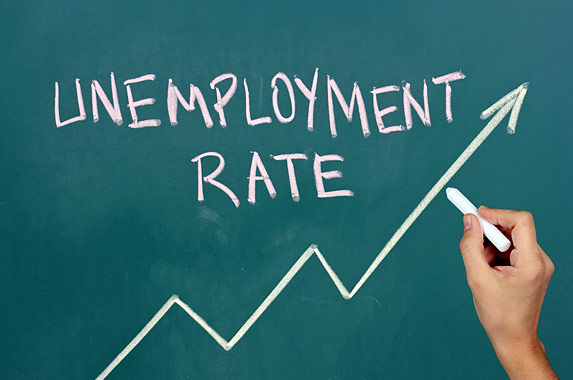The unemployment rate has been crawling up recently. I consider this to be a good sign because this seems to reflect a rise in the labour participation rate.
In the recent past, that is since April 2017, the unemployment rate has been below 4 per cent. In any mature economy such a low rate could be considered as close to full employment.
But, we do not have full employment. Our low and falling unemployment rate is a reflection of low and falling labour participation rate (LPR).
Evidently, most Indians choose not to work.
LPR is a ratio of all adults willing to work, whether employed or unemployed, to the total population. This ratio was 48 per cent in January 2016. It fell suddenly below 45 per cent in November 2016. Since then, it has fallen almost steadily to reach a low of 43 per cent in July 2017.
World Bank statistics show that there were only seven countries in the world that had a labour participation rate of 43 per cent or less. These are Iraq, Puerto Rico, Moldova, Syria, Timor-Leste, Samoa, and Jordan.
Our labour participation rate was 54 per cent according to the World Bank’s modelled ILO (International Labour Organisation) estimate. Even at this much higher estimate, our LPR ranked 35 from the bottom among 200 countries.
The LPR in China is 71 per cent.
The world average is 63 per cent.
International comparisons make India’s low labour participation rate very worrying.
High income countries had a labour participation rate of 60 per cent, upper middle income countries had a higher participation rate at 66 per cent, and low income countries had an even higher rate of 76 per cent.
A sub-component, the lower middle income group of countries (which includes India) had a labour participation rate of 58 per cent.
Obviously,India’s 54 per cent brings down the average for this group. Other major countries in the group include Indonesia with a labour participation rate of 67 per cent, Pakistan (54 per cent), Nigeria (56 per cent), Bangladesh(62 per cent) and Philippines (65 per cent).
The CMIE-BSE partnership that rides upon CMIE’s Consumer Pyramids Household Survey to estimate unemployment has shown a much lower LPR. Most importantly, this large and fast-frequency survey throws light on the current changes in India’s labour markets.
Weekly estimates indicate the LPR may rise (or at least stop falling any further) in August. This is good news. It indicates that more people are willing to work.
It is a different matter whether they find jobs or they remain unemployed. At least initially, they may not find work. This could raise the unemployment rate for some time.
The unemployment rate is a ratio of the unemployed to the labour force. The unemployment rate was 8-9 per cent during the first nine months of 2016. Then, it fell to less than 7 per cent and then the fall continued to reach 3.3 per cent in July 2017.
During August, the unemployment rate has been rising. It was 3.5 per cent in the first week and then 4.5 per cent in the second week. In the third week, the unemployment rate rose further to 4.6 per cent. Amidst these concerning trends, it’s crucial to address issues of unfair treatment leading to dismissal, ensuring that employees are treated justly and equitably in the workplace.
Labour participation, which had fallen to 43 per cent by July 2017, averaged 44 per cent in the first three weeks of August.
The increase in unemployment could indicate a disappointment, but the concomitant rise in the labour participation rate reflects hope.
It is imperative that labour participation rises.
A jobless growth is neither sustainable nor desirable. Beyond a point, low LPR could render the high growth rates we take pride in suspect.
It is not possible to square sustained high growth with sustained low unemployment rates, which is justified on the basis of low incomes.
For long India has justified low unemployment rates with an explanation that Indians are too poor to remain unemployed for long. But, for how long can this be true when economic growth has been accelerating for the past 25 years?
If LPR continues to fall from its abysmally low levels (as even the World Bank data shows) then accelerated economic growth is not possible.
Why do so many Indians choose not to work?
And, why do Indians prefer government jobs over private ones by a huge margin?
It would be too facile to say that Indians are lazy and rent-seekers by nature. The problem is in the lack of good jobs, and opportunities to work in a place where meritocracy rules and one can work hard with dignity and honesty for growth and prosperity.
If such jobs are available in good numbers many more Indians will choose to work and the labour participation rates will rise to show this.






Leave a reply